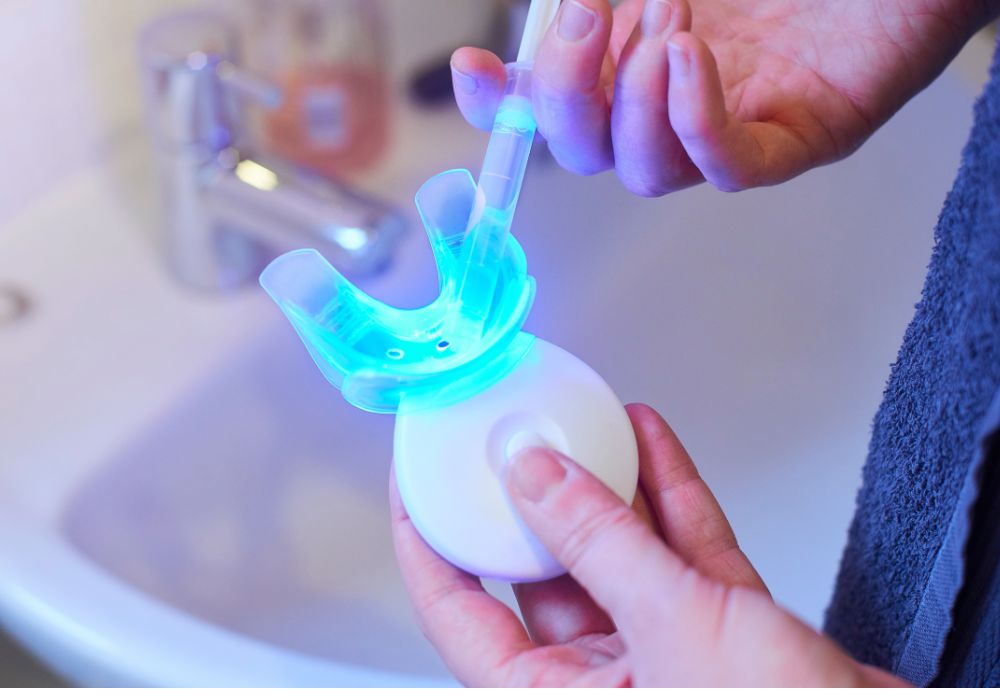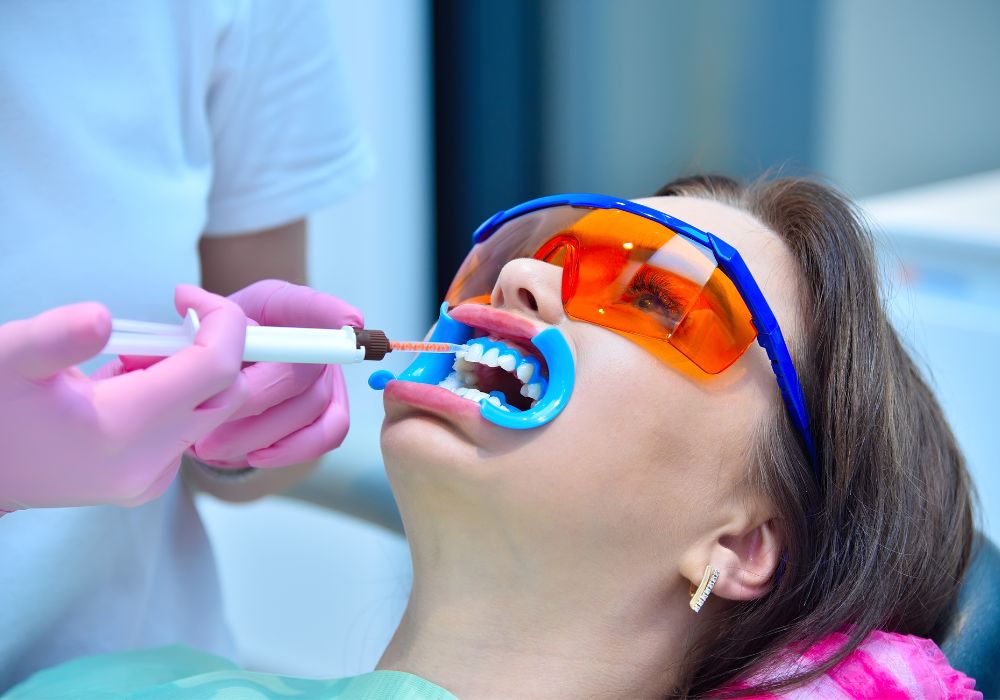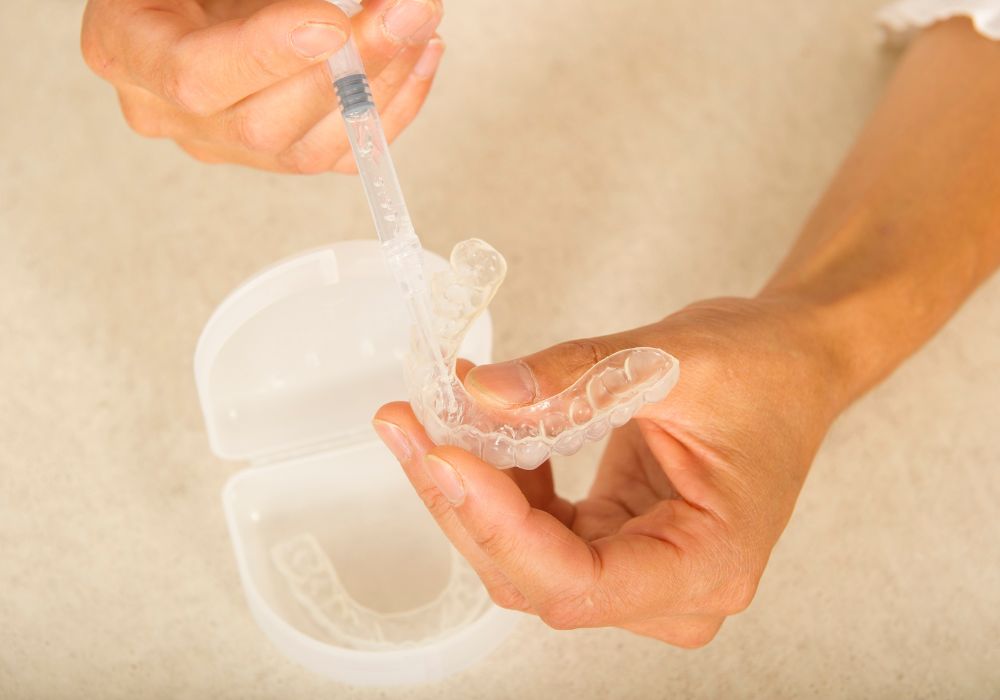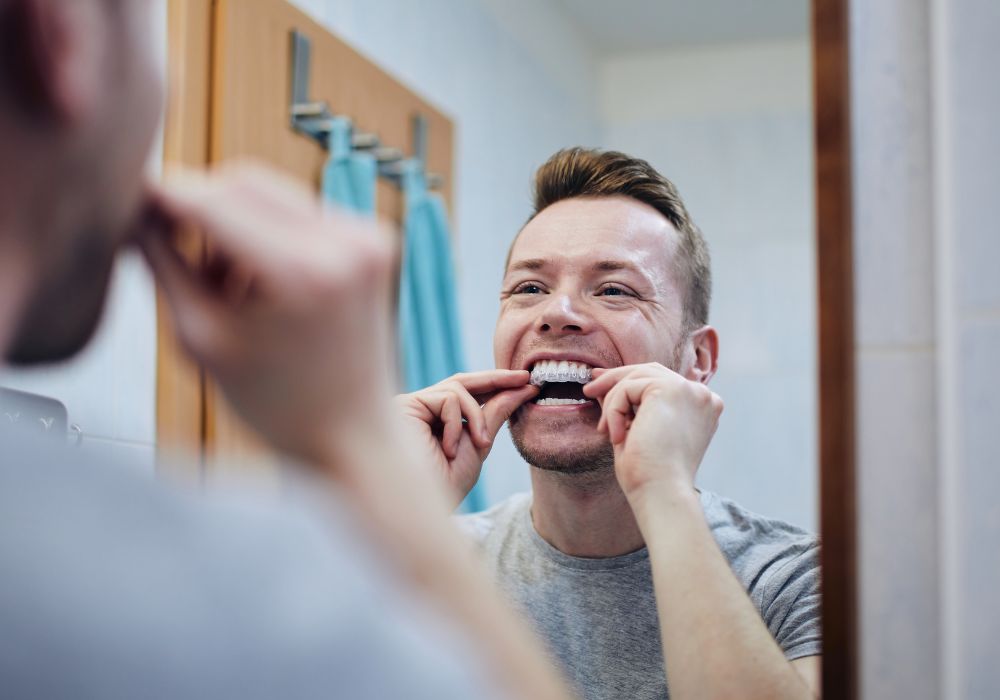Applying teeth whitening gels is one effective dental care routine for achieving a brighter smile. However, unlike toothpaste, experts do not recommend that you use these gels on your teeth daily.
So, how frequently should you whiten your teeth with gel? Is there a standard timeframe for how often you carry out teeth whitening procedures or can you apply your gel as long as you want?
It’s important to understand that, much like thumbprints, your teeth are uniquely yours. This means that everyone has a distinct dental structure, and as a result, the frequency of teeth whitening procedures will vary from person to person. Additionally, the choice of whitening product comes into play when determining how often you may need to whiten your teeth.
Nevertheless, there are some general information and guidelines you should know when using teeth whitening gel. Keep reading to find out.
How Often Should You Use a Teeth Whitening Gel?
Although there isn’t a generally applicable duration or frequency for using teeth whitening gels, there is, however, a limit to how much you can use these products. This limit is to help prevent issues that may arise from overuse, such as teeth sensitivities, uneven whitening, and gum irritation.
When asserting how long you should use these products, it’s important to consider where you got your gel from, which can be either from the store or as part of an at-home whitening kit given by your dentist. For instance, you can form a consistent whitening routine using over-the-counter whitening strips or kits for one or two weeks every three to four months.
On the other hand, at-home kits contain lesser whitening agents than store-bought ones. This means you may need to use them for longer, usually about three weeks, for about two hours each session. Although, it’s always better to follow your dentist’s instructions as they must have assessed your teeth and therefore know what works best for you.
How Teeth Whitening Gel Works?
Although regular kinds of toothpaste help remove teeth stains and keep your mouth fresh, there are certain tough dental discolorations caused by food and substances, such as coffee, tobacco, and red wine, that these products can’t remove.
In such a case, whitening gels come in handy as they contain one of these active ingredients: hydrogen peroxide or carbamide peroxide.
However, most whitening gels in the US contain hydrogen peroxide as their active ingredient. Hydrogen peroxide works by releasing its oxygen molecules, which, in turn, react with the discolored molecules on your teeth by breaking the bond holding them in place and making them colorless in the process. The result of this is whiter teeth and a brighter smile.
Typically, teeth whitening gels work gradually so you shouldn’t expect to see results after one use. You’ll need to use the gel consistently for a few weeks before seeing noticeable results. However, keep in mind that results may vary depending on the strength of the product used and how long you have it on per procedure.
How to Apply Teeth Whitening Gel?

You can use teeth whitening strips to apply the gel on your teeth. These are thin, flexible, and transparent strips of plastic coated with a gel containing a bleaching agent. These strips adhere to the surface of your teeth, allowing the gel to penetrate your enamel and break down tough stains.
Another alternative is using teeth whitening trays, which are curved, transparent, and flexible materials that take the shape of your dentition. Whitening trays help to keep the gel in place on your teeth surface so that the procedure can yield better results.
Let’s break each of them down.
1. Applying Whitening Strip
Whitening strips are a simple and convenient option, especially if you’re on a budget. To use this at home, peel off the liner covering the gel side and place it over your upper or lower teeth, ensuring it perfectly aligns with your gum line. After this, leave the strip on for about an hour or two, depending on the product you use, before taking off.
2. Applying In-Office Whitening Tray
Whitening trays come as either in-office trays or take-home trays. In-office teeth whitening trays are usually applied by dentists on their patients. So you can expect to use these trays if you book a teeth whitening session with your dentist. After the session, the dentist may then recommend take-home trays you can apply on your own.
3. Applying Take-Home Whitening Tray
To use a take-home whitening tray, start by placing small amounts of the get onto every indent of your tray. After that, properly align the tray over your teeth and press down with your finger, then run your hand over the surface to spread the gel on your teeth. Finally, leave the trays on for a stipulated time before taking off.
If you’re a first-time user, we recommend you leave whitening gel on your teeth for no longer than 45 minutes to one hour. This will help you monitor your teeth sensitivity and determine if you’d rather increase or reduce the time.
Factors to Consider When Whitening Teeth With Gel

Although anyone can carry out a teeth whitening procedure on their own, it is important to remember that oral hygiene goes beyond having white teeth. Therefore you must ensure you pay attention to what your teeth need even while attempting to brighten your teeth.
Here are some necessary pointers worth considering before, during, and after whitening your teeth with gel.
1. Before Teeth Whitening With Gel
First off, you must consult your dentist before applying whitening gel to your teeth if you have any of the following:
- Tooth sensitivity
- Prominent teeth stain
- Darkened tooth
- Dental fillings
Likewise, you may have had a dental reconstruction procedure done. In that case, we advise you to speak with a dentist first because attempting teeth whitening without a proper dental assessment can result in severe oral problems that could’ve been avoided.
Another thing to note is the type of gel you choose. Although this might sound simple, many teeth whitening products are available, making it a bit confusing to select the right one for you. As a solution, we suggest you narrow your options to products from reputable brands. This way, you’ll be sure if using only tested-and-trusted products.
After purchasing your gel, ensure you read the instructions for use so as not to exceed the recommended amount. Also, brush your teeth and floss to get rid of food particles before applying.
2. During Teeth Whitening With Gel
When whitening your teeth, do not attempt to speed up the process by using excess gel because you may end up damaging your enamel.
Also, ensure you do not leave the whitening strips on for more than required, as this can result in chemical burns on your gum. Likewise, do not leave your whitening trays on overnight because you may expose your oral cavity to potential harm.
More importantly, refrain from eating or drinking anything with the whitening gel still on your teeth because this may interfere with the process and not yield desired results. Also, eating or drinking can cause you to swallow the whitening gel accidentally. Although this may not potentially cause harm to the body, it defeats the purpose of applying the gel.
3. After Teeth Whitening With Gel

Once you’ve taken the strip or trays off, rinse your mouth thoroughly to get rid of the gel. Alternatively, you can brush using whitening toothpaste to further brighten your teeth and remove any gel residue from your mouth.
Also, see to it that you avoid beverages, food, and other substances like tobacco, chocolate, and energy drinks after your teeth whitening process, as these substances can ruin the effects of the whitening process. We advise that you complete the expected days of product usage before consuming only small quantities of these products.
However, if it’s your first time whitening your teeth with gel, it’s expected that you do not consume these staining substances until after you must have done the procedure again in about three months.
If, after the procedure, you develop tooth sensitivity, put a pause on using the gel and start using a desensitizing toothpaste. Additionally, you can visit your dentist for professional dental care and product recommendations.
Lastly, note that you may observe some whitish spots on your teeth immediately after removing the whitening trays, but do not worry; it is a result of your teeth being dehydrated. These spots should vanish after some time.
Signs of Teeth Whitening Gel Overuse
While using whitening gel may result in brighter teeth, there are a lot of dental problems associated with overuse, such as dental sensitivity, discolorations, and degrading enamel. It’s important that you use whitening gel only as instructed and constantly monitor your teeth and gums for signs of overuse.
Here are some signs of gel overuse to look out for:
- Gums appear red, swollen, and in worse cases, sensitive to touch. Also, discomfort in the mouth and throat may occur.
- Increased teeth sensitivity, especially when consuming cold or hot substances like cold drinks or hot beverages.
- Teeth appear off-whitish and translucent around the edges due to overexposure to hydrogen peroxide.
- Uneven teeth coloration, resulting in some parts of your teeth being whiter than others
- Gum recession can occur, and if not properly cared for, it can lead to tooth decay.
- Enamel becomes eroded, making your teeth more susceptible to decay.
If you notice any of these signs, you must cease applying whitening gel and seek immediate professional dental care.
Conclusion
Keep in mind that using teeth whitening gel doesn’t always guarantee white teeth, even if you’re applying it right. That said, if you’ve been on a teeth whitening routine for a while and not getting results, it’s important to check in with your dentist for a professional assessment of your dental health.

